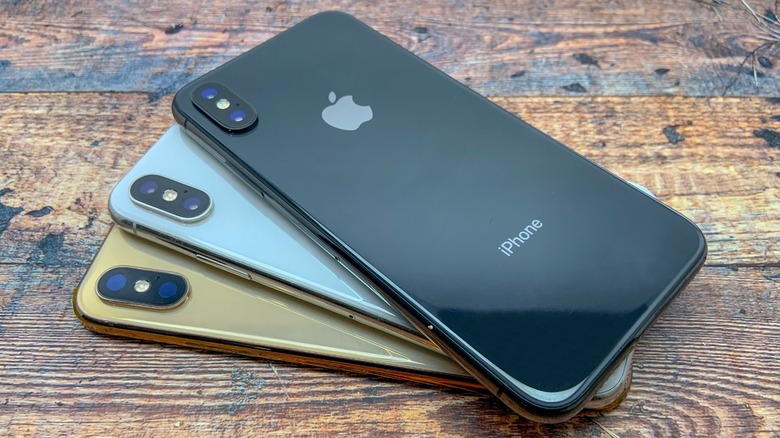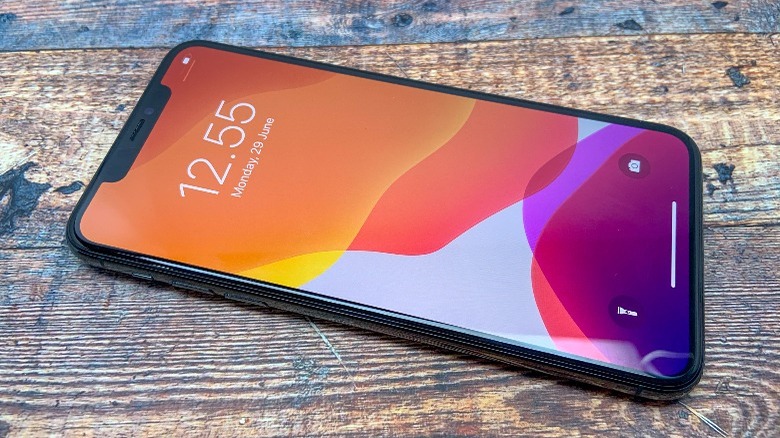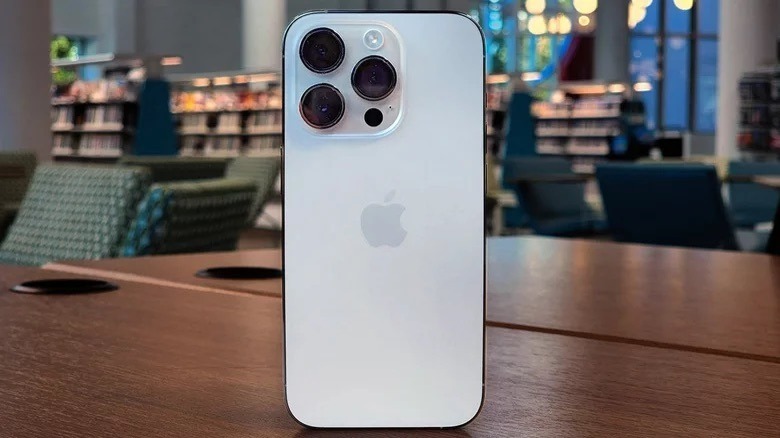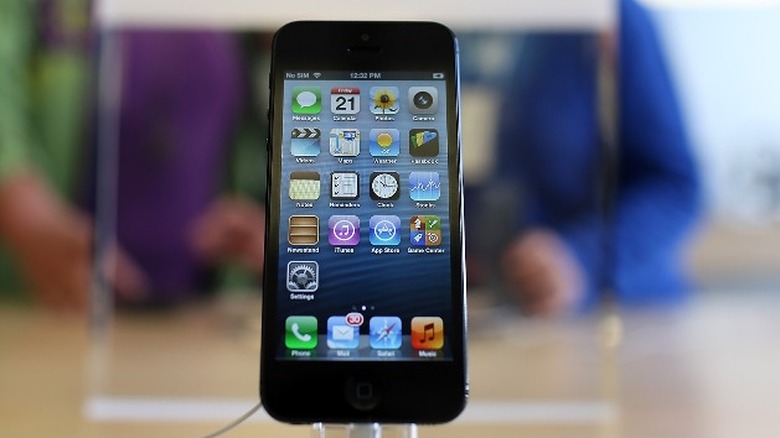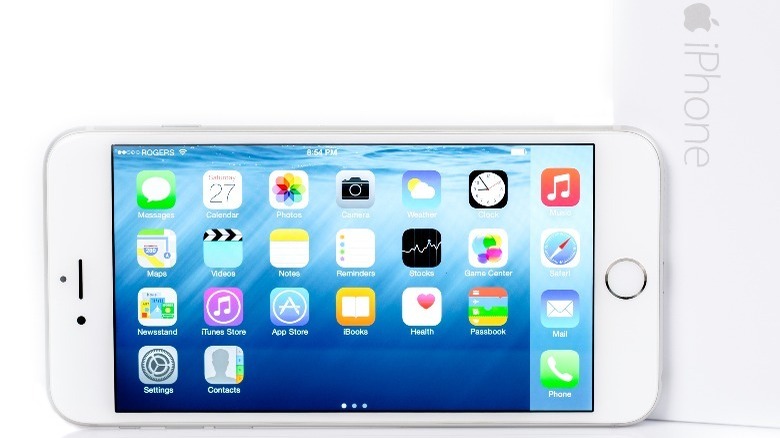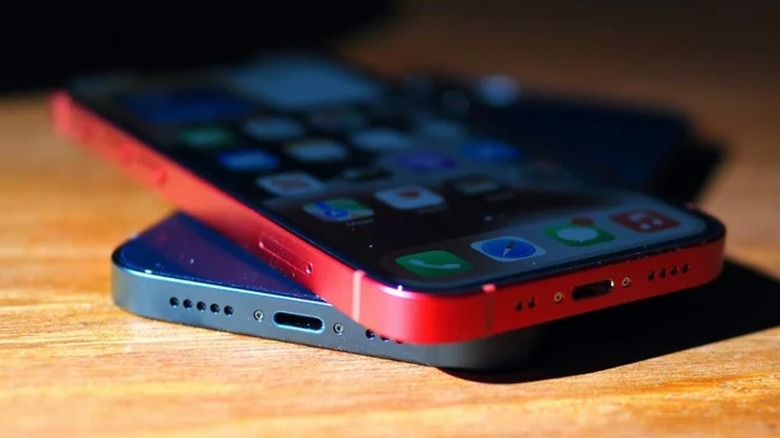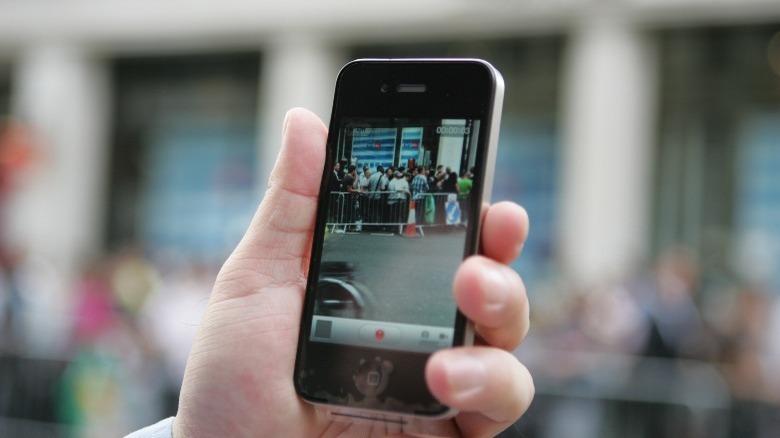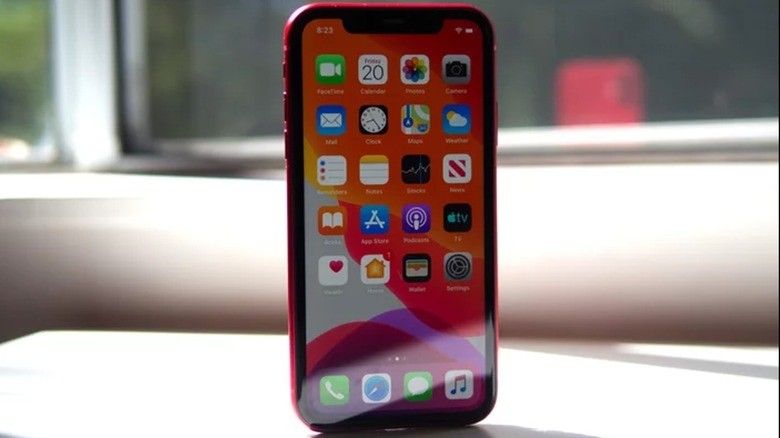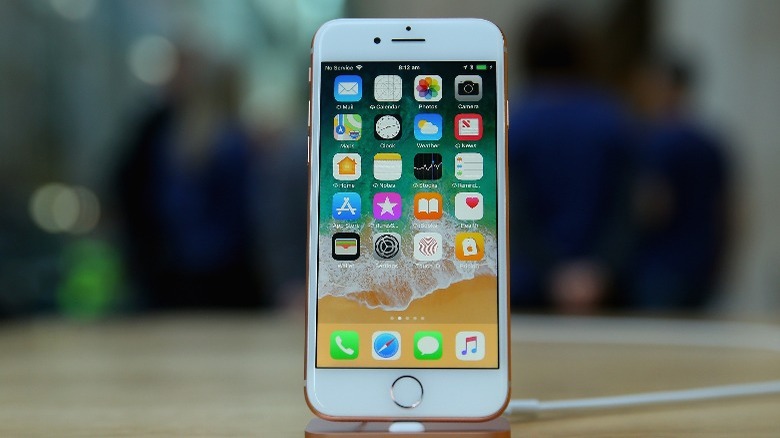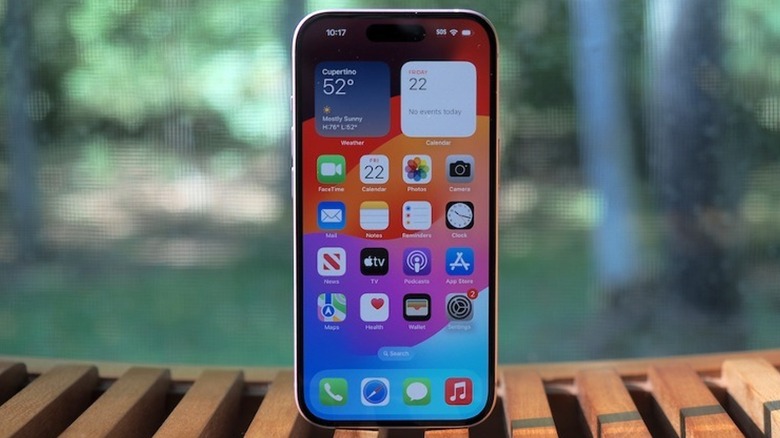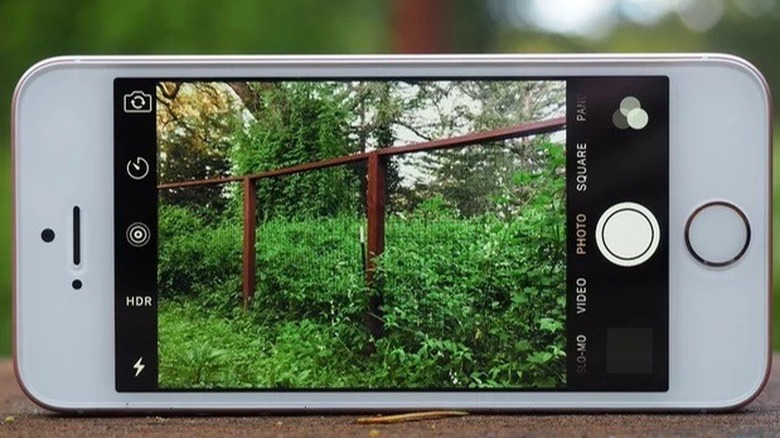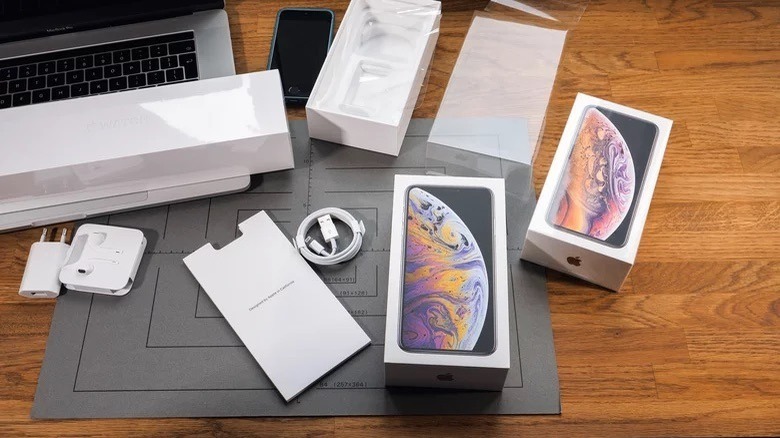The 5 Best And 5 Worst Apple iPhones Of All Time
Apple released the first iPhone in 2007 and while they weren't the first to make a smartphone or even a touchscreen one at that, there was something about the iPhone that had customers lined up to get one despite the cost. Somehow, even nearly two decades later, the hype surrounding the iPhone is yet to die down.
With each new model, the iPhone sets new standards for the entire smartphone industry and currently makes up about 60% of the smartphone market in the United States. However, around 40 iPhone models released so far, Apple has definitely had its share of ups and downs.
You see, not all iPhones are created equal. While some may have set the pace for other smartphones to follow, others have been criticized for problematic features or simply failing to meet the high standards set by their predecessors. With that said, let's take a look at the best and worst iPhone models ever made.
Best: iPhone X
It's still very on-brand for Apple to constantly find new ways to step up the designs of their smartphones, and it was no different when the iPhone X was released in 2017. Still one of the most iconic iPhones ever, the iPhone X's full-screen design ushered in a new age for the iPhone. Along with its stunning rounded corners, durable all-glass front, and sleek metals, it was Apple's first-ever face recognition introduction.
Apple's facial recognition software, or Face ID for short, phased out the fingerprint sensor, offering a more secure way to unlock your phone and enable payments. Beyond that, Face ID for the iPhone X was powered by a state of the art TrueDepth camera system used to identify your face.
In addition to its superb external features, the iPhone X also came packed with a 5.8-inch Super Retina display to support a vibrant color display along with Apple's newly released A11 Bionic Chip. At the time, Apple claimed it was the most powerful chip ever made for a smartphone, and it offered groundbreaking processing times.
Worst: iPhone 14 Pro
Designed to make a difference with the all-new Dynamic Island, A16 Bionic Chip, and a ceramic shield tougher than any smartphone glass, the iPhone 14 Pro blew us away at launch in 2022, especially with its beautiful deep purple colorway.
However, while the iPhone 14 Pro was off to a great start, within a year of its release users reported that their battery health was already down to 90%. The iPhone's battery health tracks the battery's capacity. As you continue to charge and discharge your battery, it'll weaken over time, and the battery health will start to drop. Eventually, you'll need to get a replacement battery, but that's where the problem comes in with the iPhone 14 Pro. Since other iPhones usually take a long time before you notice a significant drop in the battery health, this surprised many users — especially because getting a replacement battery out of warranty will cost you a pretty penny.
Another con with the iPhone 14 Pro was the internal structure of the smartphone. It was reported that significant upgrades were made to the internal structure of the iPhone 14, which made repairs much easier, but none of these upgrades were implemented into the iPhone 14 Pro, which was discouraging considering the higher price point.
Best: iPhone 5
From its announcement and launch in 2012, it was clear the iPhone 5 series marked a new era for Apple and really got the ball rolling for the next stage in the evolution of iPhones. The iPhone 5 series set itself apart with three models, iPhone 5, 5c, and 5s, each tailored for different users, technology needs, and budgets.
The base iPhone 5 was everything consumers wanted in the iPhone 4s, with a larger 4-inch screen, improved battery life, and 4G LTE to keep you connected all day. Could it get any better? Possibly, as the iPhone 5c came through as an aesthetic replacement for the iPhone 5. It abandoned the dull exterior palette of the iPhone 5 and featured more vibrant colors, including blue, pink, and yellow — all at a price point that was much easier on your wallet.
The star of the show, however, was really the iPhone 5s. It introduced innovations like a built-in fingerprint sensor into the home button, which Apple coined Touch ID, a first for Apple handheld devices. The iPhone 5s also came with a powerful A7 processor and M7 motion compressor, which Apple claimed made the camera's autofocus two times faster than the iPhone 5 and 5c.
Worst: iPhone 6 Plus
The 2014 iPhone 6 Plus was Apple's first venture into more phablet adjacent smartphones. Its 5.5-inch display was a big deal, especially considering that Apple had only previously dealt with two sizes, 3.5-inch and 4-inch. However, aside from its physical differences — and its iPad-style support for landscape orientation on certain apps — the iPhone 6 Plus offered very few add-ons to the base model despite its higher price point.
The iPhone 6 and iPhone 6 Plus were both released with the same A8 processor, which meant that the key performance difference was battery capabilities. The iPhone 6 Plus offers a 12-hour internet usage time on LTE compared to 10 hours on the iPhone 6, so was a 2-hour usage difference worth the additional cost?
The iPhone 6 Plus also faced scrutiny cause there was a chance the phone could bend, a flaw that got widespread attention and criticism. The lack of significant improvements in camera quality and performance compared to its predecessors didn't help its case with consumers. The slow battery charging, relative sluggishness of iOS 8, and the iPhone 6 Plus simply being too big to use with just one hand also contributed to this model being classified as one of the most disappointing iPhones of all time.
Best: iPhone 13
One thing that really helped the iPhone 13 stand out from other iPhones was the diagonal camera lens orientation. Before the iPhone 13 was released in 2021, Apple used horizontally positioned cameras or a singular camera for its base models, so this was a shift from the norm. This new diagonal camera included a wide-angle and ultrawide lens, all of which were paired with the new Cinematic Mode.
We also saw significant upgrades to the iPhone where it really counts, including a new battery that can last through 19 hours of video playback. You also had access to audio playback of up to 75 hours, increased base storage of 128 GB, 5G connectivity, and a brighter screen thanks to the super XDR Retina Display.
The IP68 water resistance, ceramic shield front-back glass, and aluminum design also made this the most durable iPhone of its time. The iPhone 13 was also great for the environment, as Apple made extensive use of recycled materials to produce a more eco-friendly device.
Worst: iPhone 4
Released in 2010 with a beautiful design, the iPhone 4 introduced game-changing features like the 5MP camera and Retina Display. However, the iPhone 4 faced much criticism for its Antennagate issue, where the phone's signal would vanish if you held it a certain way. Apple initially tried to brush it off as a software issue and handled the entire Antennagate debacle poorly. Eventually, Jobs had to admit there was indeed a hardware error with the iPhone 4 and come up with some limited compensation for early purchasers.
To top it off, the iPhone 4's back glass was found to be fragile, raising concerns about its durability. In a study by iPhone warranty provider SquareTrade it was noted that "iPhone 4 owners reported 82% more damaged screens in the first 4 months compared to iPhone 3gs owners" and that "an estimated 15.5% of iPhone 4 owners will have an accident within a year of buying their phone."
Best: iPhone 11
When the iPhone 11 was released in 2019, we were all blown away by Apple's new camera design. The iPhone 11 featured two vertically oriented camera lenses, a first for Apple — the iPhone 7 Plus introduced a two camera setup, but they were positioned side by side. The cameras on the iPhone included a 12-megapixel wide-angle camera and an ultra-wide lens for those cool 0.5x selfies that became a hit among users.
The iPhone 11 was also quite durable. It was made with anodized aluminum, the toughest iPhone glass at the time, passed a 6-foot drop test unharmed, and only suffered minor damage from an 11-foot drop fall.
Apple's new A13 chip also delivered an impressive performance, including fast app launches, a vibrant Liquid Retina HD display for a great viewing experience, and a battery that lasts up to 65 hours on audio playback. The iPhone 11's improved water resistance IP68 was also well received, allowing the phone to last up to 30 minutes underwater at a maximum depth of 2 meters.
Worst: iPhone 8
Released in 2017, the iPhone 8 was not necessarily a bad iPhone, but it was simply not the best of what we know Apple can deliver in terms of innovative design. The iPhone 8 looks almost identical to its predecessor, the iPhone 7, although it does boast a slightly shinier chassis.
When we look closer at the specs, however, the iPhone 8 and iPhone 7 have too many similarities to ignore. They have the same 14-hour talk time, 3D Touch display, home button, and IP67 water resistance. Beyond that, there was only a slight variation in the camera specs and processor. Many users considered the iPhone 8 not worth the upgrade, and it's hard not to agree.
One of the few pros of upgrading to the iPhone 8 would have been the True Tone feature as prior to the iPhone 8 this display feature was only available on iPads. Still, many customers felt that it made more sense to skip the upgrade and wait for the next model of the iPhone to come out.
Best: iPhone 15
When it launched in September 2023, the iPhone 15 redefined what the iPhone could do. One of Apple's best releases so far, it featured a ceramic shield tougher than any smartphone glass with an aerospace-grade aluminum enclosure.
The iPhone 15 introduced a new 48MP main camera for super-crisp photos, super Retina XDR Display, all powered by the A16 Bionic Chip that Apple described as "up to 40% faster than the GPU in iPhone 12."
The iPhone 15's battery life was also a big improvement from its predecessors. It can play video for up to 20 hours, which was three hours more than the iPhone 12. The iPhone 15's stronger battery can last up to 1,000 cycles before seeing a significant drop in capacity, which is 500 more than previous iPhones. As if it could not get any better, this new model was also USB-C compatible, so you can charge your MacBook or iPad with the same charger as your iPhone.
Worst: iPhone SE
When Apple released the first-generation iPhone SE in 2016, it was clear the model was designed to offer an affordable smartphone with the powerful A9 bionic chip of that time. Still, with the iPhone 7 series only months away from launch, there wasn't a ton of incentive to buy it from a consumer's perspective.
A big part of this was also due to its dated design, which was heavily inspired by the iPhone 5s. Although, if you prefer smaller devices, you might be able to appreciate the iPhone SE design. Regardless, in the grand scheme of things, it feels very out of step with the more innovative designs from Apple we've gotten used to.
Even in later models, such as the iPhone SE 2nd and 3rd gen, the iPhone SE generally lacks more modern features like Face ID and a full edge-to-edge display. Additionally, its reliance on a single camera and limited storage options didn't work in its favor.
How we chose the best (and the worst)
Admittedly, it can be hard to judge the best and worst iPhones from a purely objective standpoint. Some of the iPhones on this list may or may not have been some of our first introductions to Apple or our current smartphone, but we tried to maintain a good balance of both objective and subjective viewpoints in making our case. We also took a page from our comprehensive reviews dating back nearly two decades while considering key things like the shock factor in terms of design, performance, camera quality, battery life, internal upgrades, and general user satisfaction.
The iPhone models on the best half of this list earned their spot by pushing design forward and ushering in new innovations. While the models of the worst half of the list simply fell flat, had significant issues, or were found to be repetitive in terms of design and features. We covered the whole spectrum of iPhones released to date, some of which were monumental to smartphone advancement and some of which the specs simply didn't exactly blow us away.
